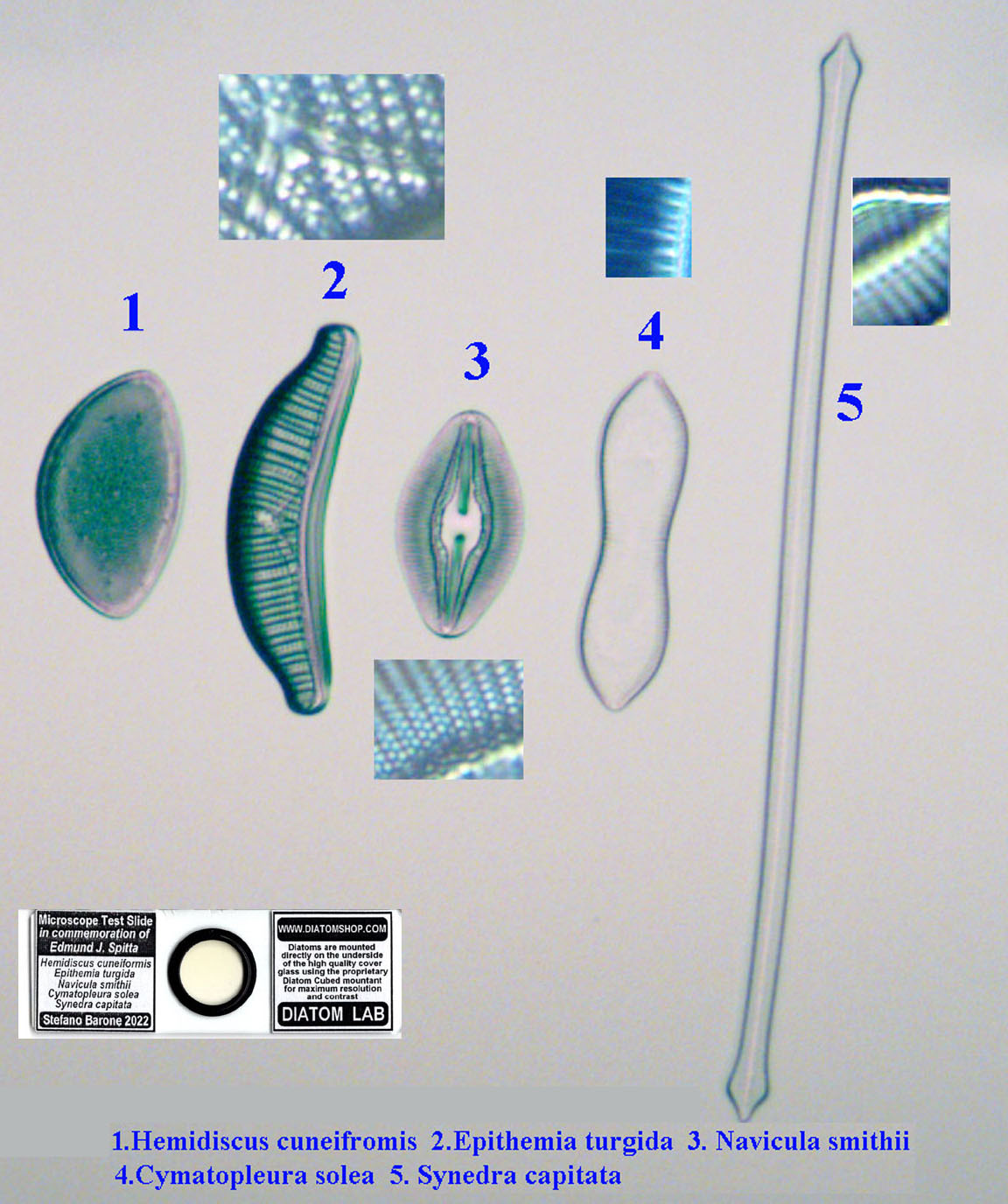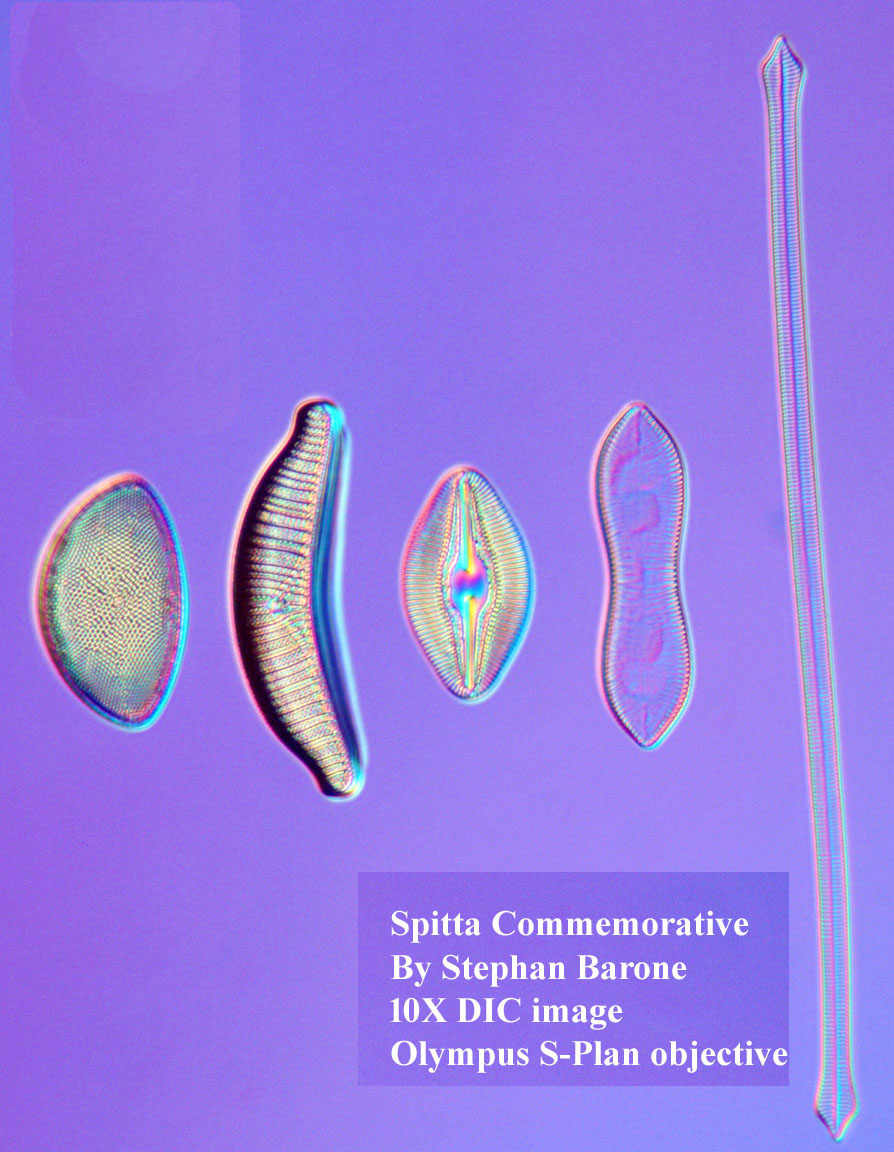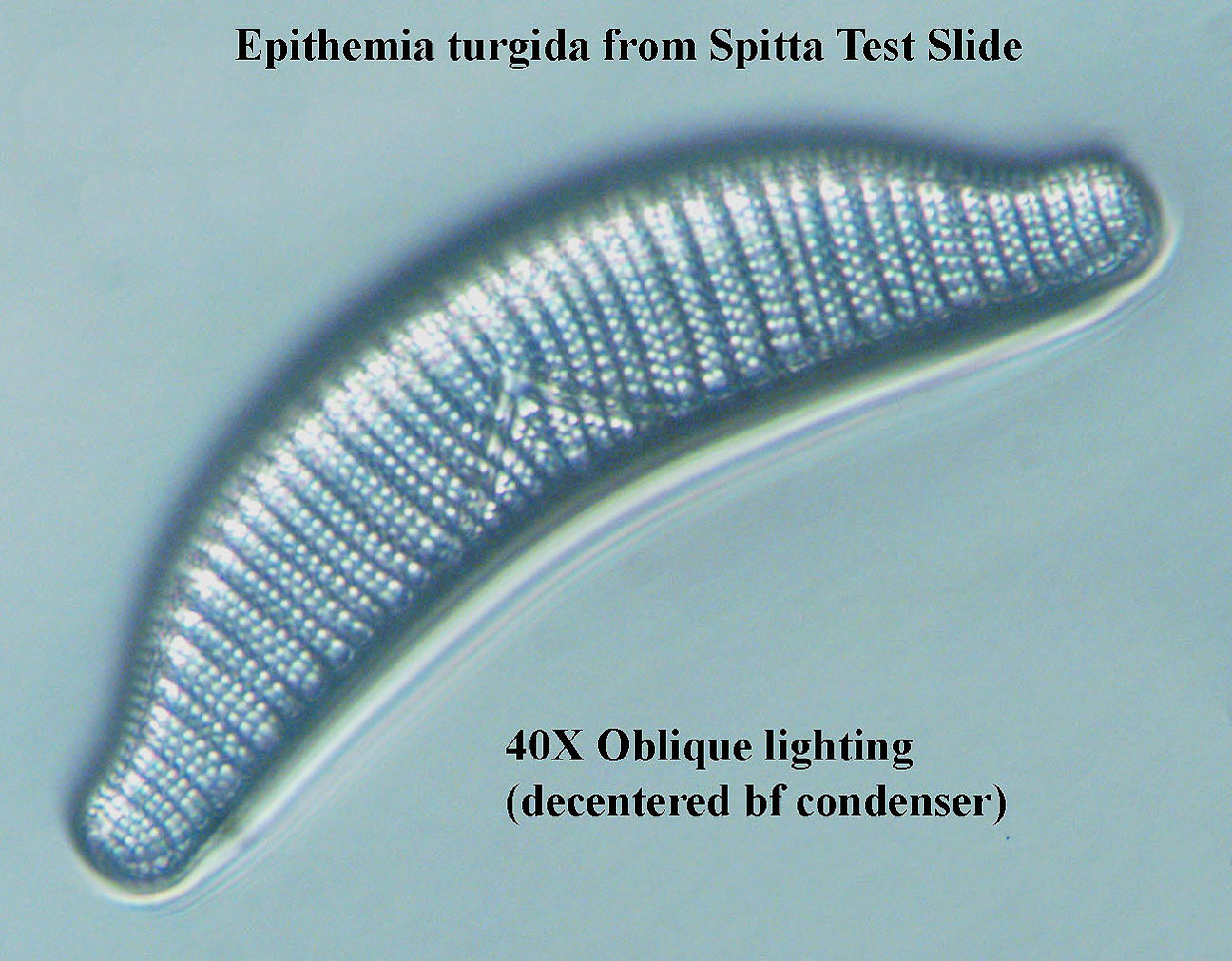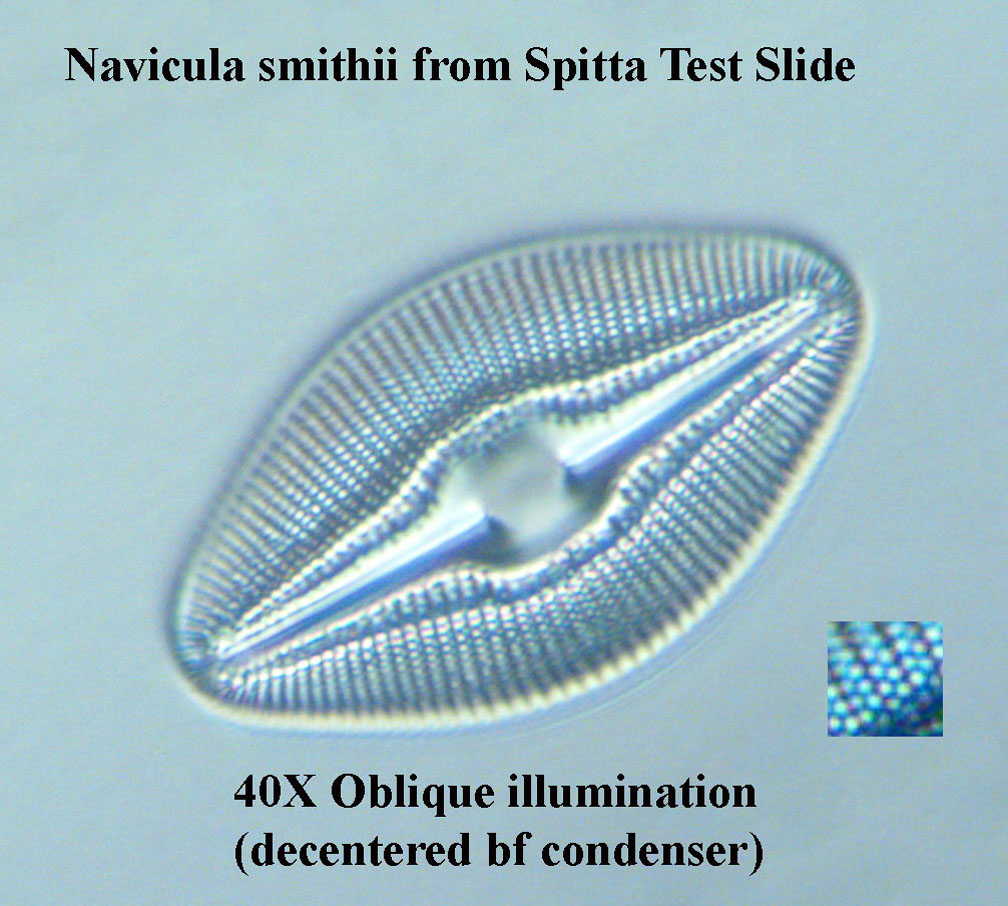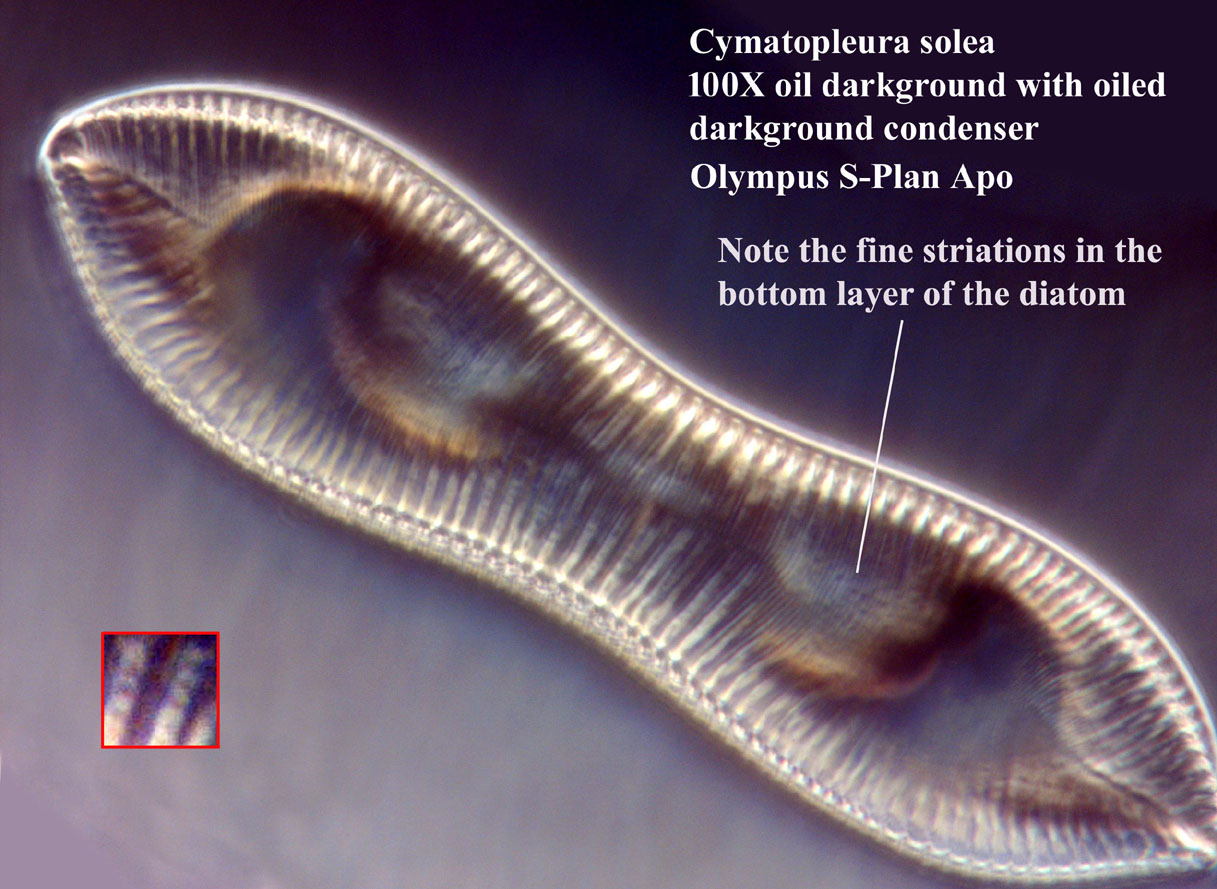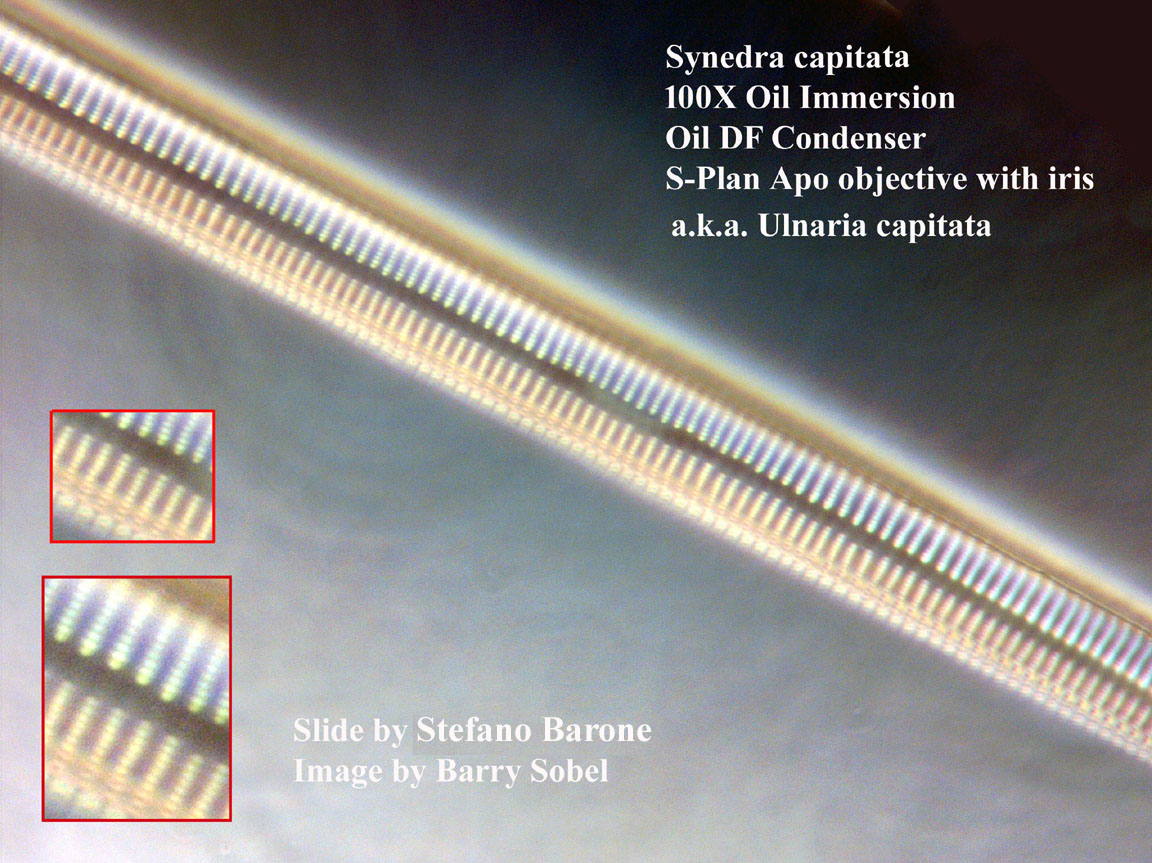This is a slide produced by Stefano Barone of the Diatom Shop. It is a test slide to commemorate the work of Edmund J. Spitta, an accomplished expert in microscopy and in photomicrograpy in particular. His book is legendary and its plates are impressive.
He stated that Hemidiscus requires an n.a. of 0.30 to clearly resolve the areolae, and my 0.30 Olympus S-plan does indeed resolve the areolae of this diatom. The areolae of Epithemia turgida and Navicula spencerii were both well resolved with my 40X S-Plan using oblique illumination achieved by de-centering the condenser and adjusting the aperture diaphragm and light intensity. He stated that the double rows of the areolae of N. smithii required oil immersion for resolution into individual dots
, but clearly this is not the case, as shown in the 40X images. Cymatopleura solea and Synedra capitata are more challenging and did require my 100X S-Plan Apo objective with double oil immersion to resolve the features of fine striations and areolae respectively. I do not have a oil immersion objective with an intermediate n.a. to see if something like a 60X oil immersion objective would also work. Although oblique illumination worked best for the easier
first three objects, I found that oil immersion dark ground illumination with a high n.a. darkground oiled condenser worked better than oblique illumination or DIC for the last two objects. Although I was able to duplicate the resolution described by Spitta on these diatoms, his incredible images of Amphopleura Pellucida (not on this slide) were something I could not accomplish, just barely resolving the areolae without the distinct clarity shown in his plates, even following Spitta's directions to the letter.
My best results on A.pellucida were achieved with a Realgar strew mount by R.I. Firth. Interestingly, I could not resolve the areolae on A. pellucida even with a specimen mounted on the coverslip mounted in Zrax by Klause kemp; this mountant, with a refractive index of about 1.7, is a high
r.i. mountant, it is not even close to the Realgar r.i. of 2.5. Unfortunately Realgar is extremely toxic to produce and use and is therefore no longer available. I suspect a better image could be achieved with a purpose-made A.pellucida mounted on the coverslip with Realgar, if such was available!
